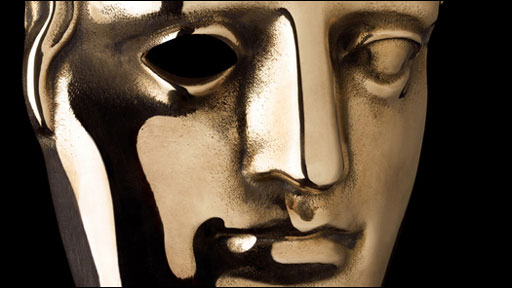|
|
||
|
Pro Tools
FILMFESTIVALS | 24/7 world wide coverageWelcome ! Enjoy the best of both worlds: Film & Festival News, exploring the best of the film festivals community. Launched in 1995, relentlessly connecting films to festivals, documenting and promoting festivals worldwide. We are currently working actively to upgrade this platform, sorry for the inconvenience. For collaboration, editorial contributions, or publicity, please send us an email here. User login |
ÉCU-The European Independent Film FestivalÉCU - The European Independent Film Festival is dedicated to the discovery and advancement of the very best independent films from around the world. We are a festival who believes in our independent filmmakers and their artistic talents. ÉCU proudly provides a unique platform that brings together diverse audiences who are hungry for something other than major studio productions and original and innovative filmmakers.
The 16th edition of ÉCU - The European Independent Film Festival will take place on 9th-11th April 2021. Now open for submissions!
For more details regarding the festival, please visit our website at www.ecufilmfestival.com.
 Brune/Blonde at the Cinémathèque Française
Eyebrows were raised when the Cinémathèque Française announced its
Throughout cultural history, hair is something that has always
Hence, for the ‘Brune/Blonde’ exhibition the Cinémathèque Française
Aside from obvious links to sensuality and darker sexual themes of
The strongest message of the exhibition seems to be that hairstyles
Another representation of hair comes from its use as a plot device.
In the final space, the exhibition tries to put forward the idea of
Although these sculptures were the only examples of real hair that I
For me, the highlight of the exhibition was the 6 short films shown
Hitchcock himself said that ‘the perfect woman of mystery is one who ///
Bien des sourcils se sont haussés lorsque la Cinémathèque a annoncé
À travers l’histoire, les cheveux ont toujours défini une période et
La Cinémathèque dédie donc un étage entier à des exemples artistiques
En plus de liens évidents avec la sensualité ou le thème sexuel plus
Le message le plus fort délivré par l’exposition semble être que les
Les cheveux peuvent aussi être un point clé de l’intrigue. Les
Dans le dernier espace la chevelure est présentée comme une notion
Bien que ce soient les seuls vrais cheveux que l’on peut voir pendant
Pour moi, la meilleure partie de l’exposition est la petite pièce où
Hitchock a dit que “La parfaite femme à mystères doit être blonde, 19.01.2011 | ÉCU-The European Independent Film Festival's blog Cat. : Brune/Blonde Cinematheque Française ecu 2011 ecu film festival European Independent Film Festival Jen Wallace Jennifer Wallace Marc Garanger Marilyn Monroe paris series Penelope Cruz Rita Hayworth Shirin Neshat FESTIVALS
|
LinksThe Bulletin Board > The Bulletin Board Blog Following News Interview with EFM (Berlin) Director
Interview with IFTA Chairman (AFM)
Interview with Cannes Marche du Film Director
Filmfestivals.com dailies live coverage from > Live from India
Useful links for the indies: > Big files transfer
+ SUBSCRIBE to the weekly Newsletter DealsUser imagesAbout ÉCU-The European Independent Film Festival Hillier Scott Hillier Scott (ECU)
Scott Hillier, Founder and President of ÉCU - The European Independent Film Festival
Scott Hillier is a director, cinematographer, and screenwriter, based in Paris, France. In the last 20 years, Hillier has gained international recognition from his strong and incredible cinematography, editing, writing, producing and directing portfolio in both the television and film industries.
Scott began his career in the television industry in Australia. In 1988, he moved to London getting a job with the BBC who then set him to Baghdad. This opportunity led him to 10 years of traveling around world for the BBC, mainly in war zones like Somalia, Bosnia, Tchetcheynia, Kashmir, and Lebanon. After a near fatal encounter with a Russian bomber in Tchechnyia, Hillier gave up his war coverage and began in a new direction.
He moved to New York City in 1998. He directed and photographed eight one-hour documentaries for National Geographic and The Discovery Channel. Based on his war knowledge and experience, Hillier wrote and directed a short film titled, “Behind the Eyes of War!" The film was awarded “Best Short Dramatic Film” at the New York Independent Film and TV Festival in 1999. From that he served as Supervising Producer and Director for the critically acclaimed CBS 42 part reality series, "The Bravest” in 2002 and wrote and directed a stage play called, "Deadman’s Mai l," which ran at Le Théâtre du Moulin de la Galette in Paris during the summer of 2004. He then became the Director of Photography on a documentary titled, “Twin Towers." This was yet another life changing experience for Hillier. The riveting documentary won an Academy Award for "Best Documentary Short Subject" in 2003. In 2004, Hillier changed continents again, spending three months in Ethiopia. He produced “Worlds Apart,” a pilot for ABC America / True Entertainment / Endemol. As you can see, Hillier was and is always in constant movement and enjoys working in a number of diverse creative areas including documentaries, music videos, commercials, feature and short films.
Scott studied film at New York University and The London Film and Television School. He also studied literary non-fiction writing at Columbia University. Hillier's regular clients include the BBC, Microsoft, ABC, PBS and National Geographic. Between filming assignments, he used to teach film, a Masters Degree course in Screenwriting at the Eicar International Film School in Paris, France and journalism at the Formation des Journalistes Français in Paris, France.
View my profile Send me a message The EditorUser contributionsUser links |



























